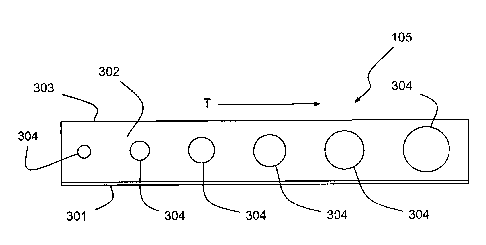Some of the information on this Web page has been provided by external sources. The Government of Canada is not responsible for the accuracy, reliability or currency of the information supplied by external sources. Users wishing to rely upon this information should consult directly with the source of the information. Content provided by external sources is not subject to official languages, privacy and accessibility requirements.
Any discrepancies in the text and image of the Claims and Abstract are due to differing posting times. Text of the Claims and Abstract are posted:
| (12) Patent: | (11) CA 2652661 |
|---|---|
| (54) English Title: | A STRINGER FOR AN AIRCRAFT WING AND A METHOD OF FORMING THEREOF |
| (54) French Title: | LISSE DESTINEE A UNE AILE D'AVION ET PROCEDE DE FORMATION DE CELLE-CI |
| Status: | Expired and beyond the Period of Reversal |
| (51) International Patent Classification (IPC): |
|
|---|---|
| (72) Inventors : |
|
| (73) Owners : |
|
| (71) Applicants : |
|
| (74) Agent: | BORDEN LADNER GERVAIS LLP |
| (74) Associate agent: | |
| (45) Issued: | 2014-09-16 |
| (86) PCT Filing Date: | 2007-05-23 |
| (87) Open to Public Inspection: | 2007-12-21 |
| Examination requested: | 2012-05-09 |
| Availability of licence: | N/A |
| Dedicated to the Public: | N/A |
| (25) Language of filing: | English |
| Patent Cooperation Treaty (PCT): | Yes |
|---|---|
| (86) PCT Filing Number: | PCT/GB2007/001927 |
| (87) International Publication Number: | WO 2007144563 |
| (85) National Entry: | 2008-11-18 |
| (30) Application Priority Data: | ||||||
|---|---|---|---|---|---|---|
|
The present invention relates to a stringer for an aircraft wing and a method
of forming
such a stringer in which the stringer is formed from a single piece of
material and has
differential strength along its length. The stringer comprises two side
panels, at least
one of which is perforated to form a set of holes spaced along the length of
the stringer.
The volume of holes increases towards the wing tip end of the stringer thereby
enabling
the load capacity of the stringer to be tailored along its length.
La présente invention concerne une lisse (105) destinée à une aile d'avion et un procédé de formation d'une telle lisse dans lequel la lisse (105) est formée d'une seule pièce de matériau et présente un niveau de résistance différencié le long de sa longueur.
Note: Claims are shown in the official language in which they were submitted.
Note: Descriptions are shown in the official language in which they were submitted.

2024-08-01:As part of the Next Generation Patents (NGP) transition, the Canadian Patents Database (CPD) now contains a more detailed Event History, which replicates the Event Log of our new back-office solution.
Please note that "Inactive:" events refers to events no longer in use in our new back-office solution.
For a clearer understanding of the status of the application/patent presented on this page, the site Disclaimer , as well as the definitions for Patent , Event History , Maintenance Fee and Payment History should be consulted.
| Description | Date |
|---|---|
| Time Limit for Reversal Expired | 2017-05-23 |
| Inactive: Correspondence - Transfer | 2016-07-12 |
| Letter Sent | 2016-05-24 |
| Grant by Issuance | 2014-09-16 |
| Inactive: Cover page published | 2014-09-15 |
| Inactive: Final fee received | 2014-06-27 |
| Pre-grant | 2014-06-27 |
| Notice of Allowance is Issued | 2014-05-08 |
| Letter Sent | 2014-05-08 |
| Notice of Allowance is Issued | 2014-05-08 |
| Inactive: Approved for allowance (AFA) | 2014-05-06 |
| Inactive: Q2 passed | 2014-05-06 |
| Amendment Received - Voluntary Amendment | 2014-01-10 |
| Inactive: S.30(2) Rules - Examiner requisition | 2013-07-10 |
| Letter Sent | 2012-05-22 |
| Request for Examination Requirements Determined Compliant | 2012-05-09 |
| All Requirements for Examination Determined Compliant | 2012-05-09 |
| Request for Examination Received | 2012-05-09 |
| Inactive: Office letter | 2011-05-27 |
| Letter Sent | 2011-05-20 |
| Inactive: Cover page published | 2009-03-12 |
| Inactive: Notice - National entry - No RFE | 2009-03-10 |
| Inactive: First IPC assigned | 2009-03-04 |
| Application Received - PCT | 2009-03-03 |
| National Entry Requirements Determined Compliant | 2008-11-18 |
| Application Published (Open to Public Inspection) | 2007-12-21 |
There is no abandonment history.
The last payment was received on 2014-04-23
Note : If the full payment has not been received on or before the date indicated, a further fee may be required which may be one of the following
Please refer to the CIPO Patent Fees web page to see all current fee amounts.
| Fee Type | Anniversary Year | Due Date | Paid Date |
|---|---|---|---|
| Basic national fee - standard | 2008-11-18 | ||
| MF (application, 2nd anniv.) - standard | 02 | 2009-05-25 | 2009-03-10 |
| MF (application, 3rd anniv.) - standard | 03 | 2010-05-25 | 2010-04-27 |
| Registration of a document | 2011-04-19 | ||
| MF (application, 4th anniv.) - standard | 04 | 2011-05-24 | 2011-04-21 |
| MF (application, 5th anniv.) - standard | 05 | 2012-05-23 | 2012-04-20 |
| Request for examination - standard | 2012-05-09 | ||
| MF (application, 6th anniv.) - standard | 06 | 2013-05-23 | 2013-04-23 |
| MF (application, 7th anniv.) - standard | 07 | 2014-05-23 | 2014-04-23 |
| Final fee - standard | 2014-06-27 | ||
| MF (patent, 8th anniv.) - standard | 2015-05-25 | 2015-05-11 |
Note: Records showing the ownership history in alphabetical order.
| Current Owners on Record |
|---|
| AIRBUS OPERATIONS LIMITED |
| Past Owners on Record |
|---|
| THOMAS CHILDS |